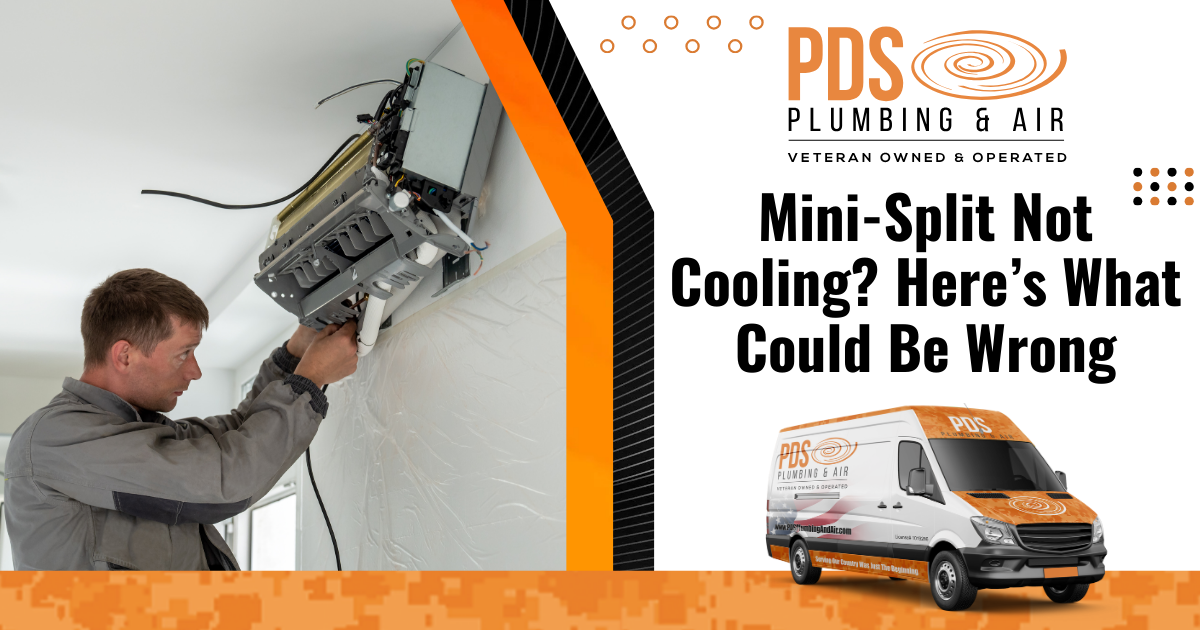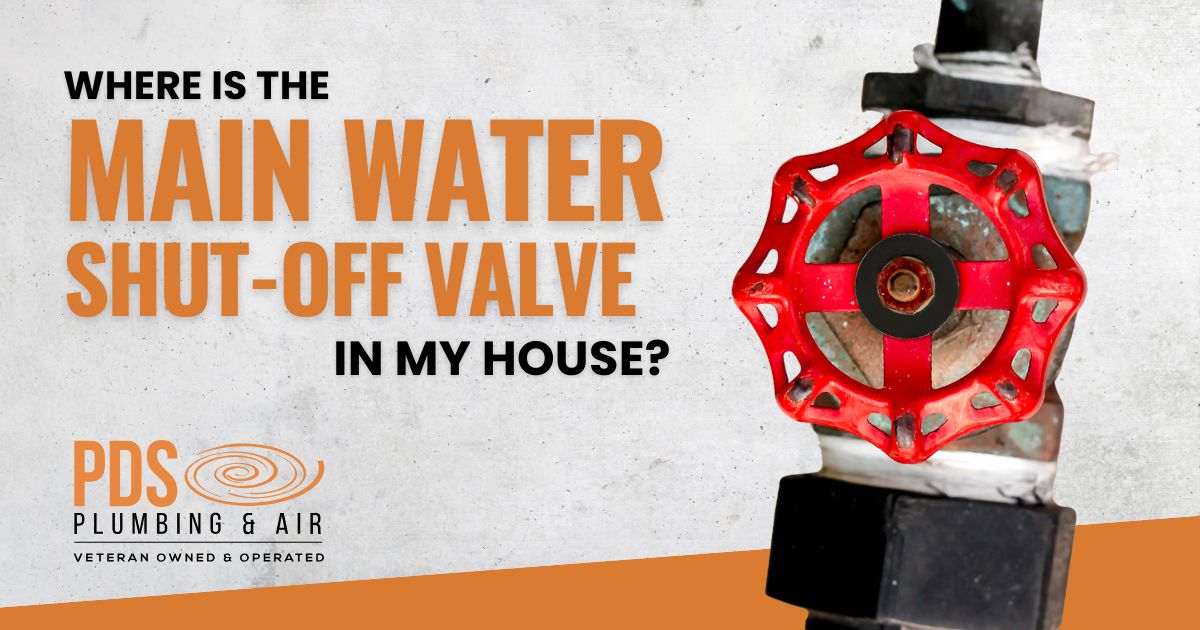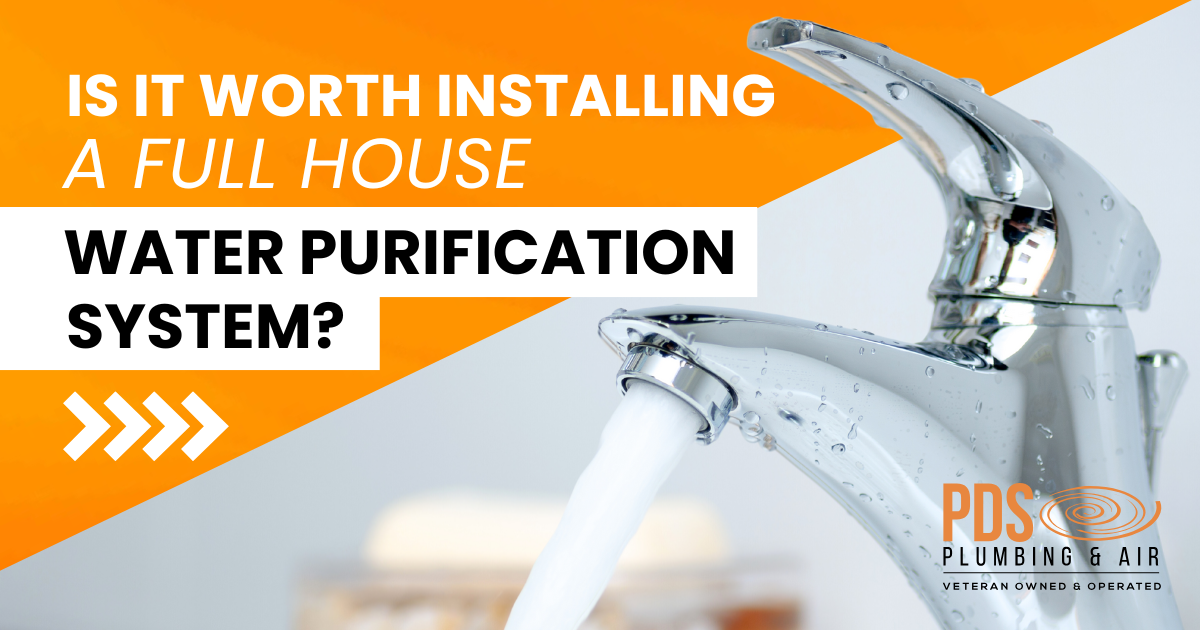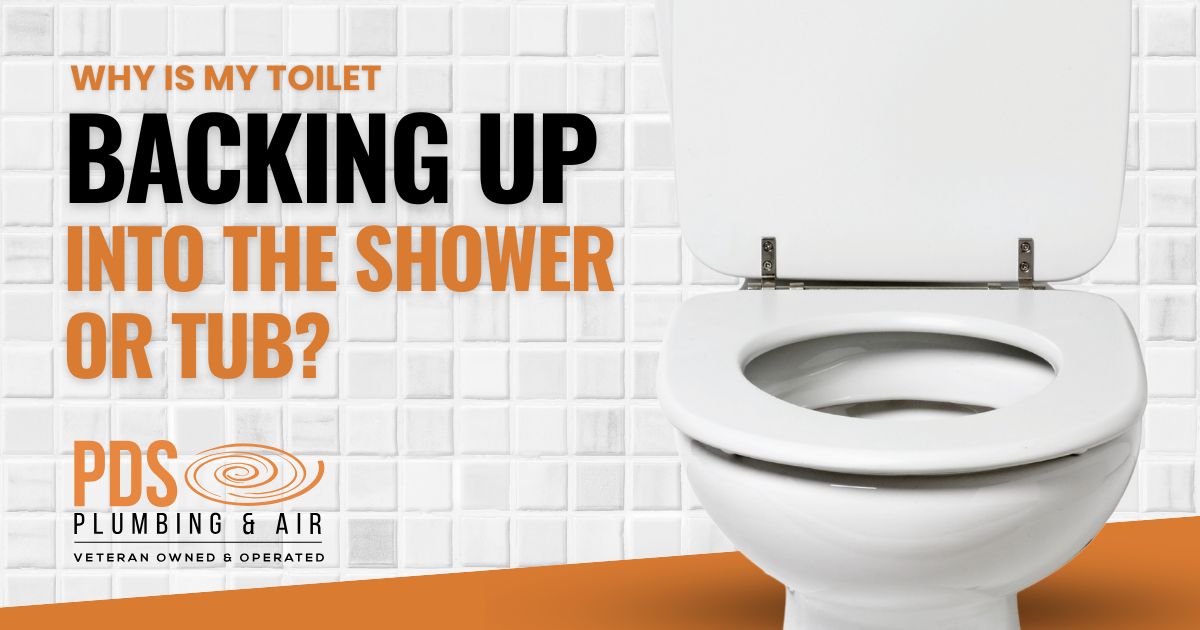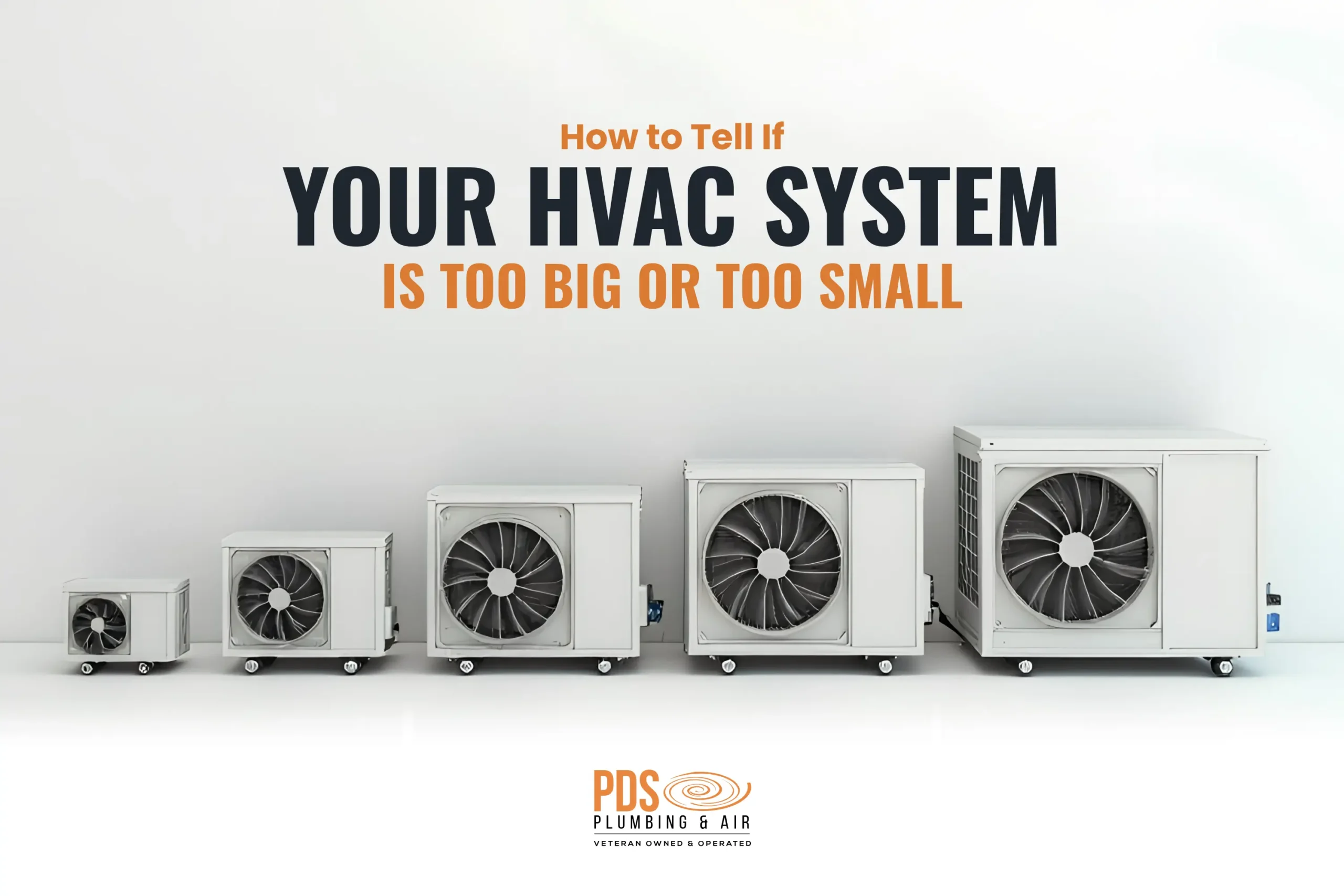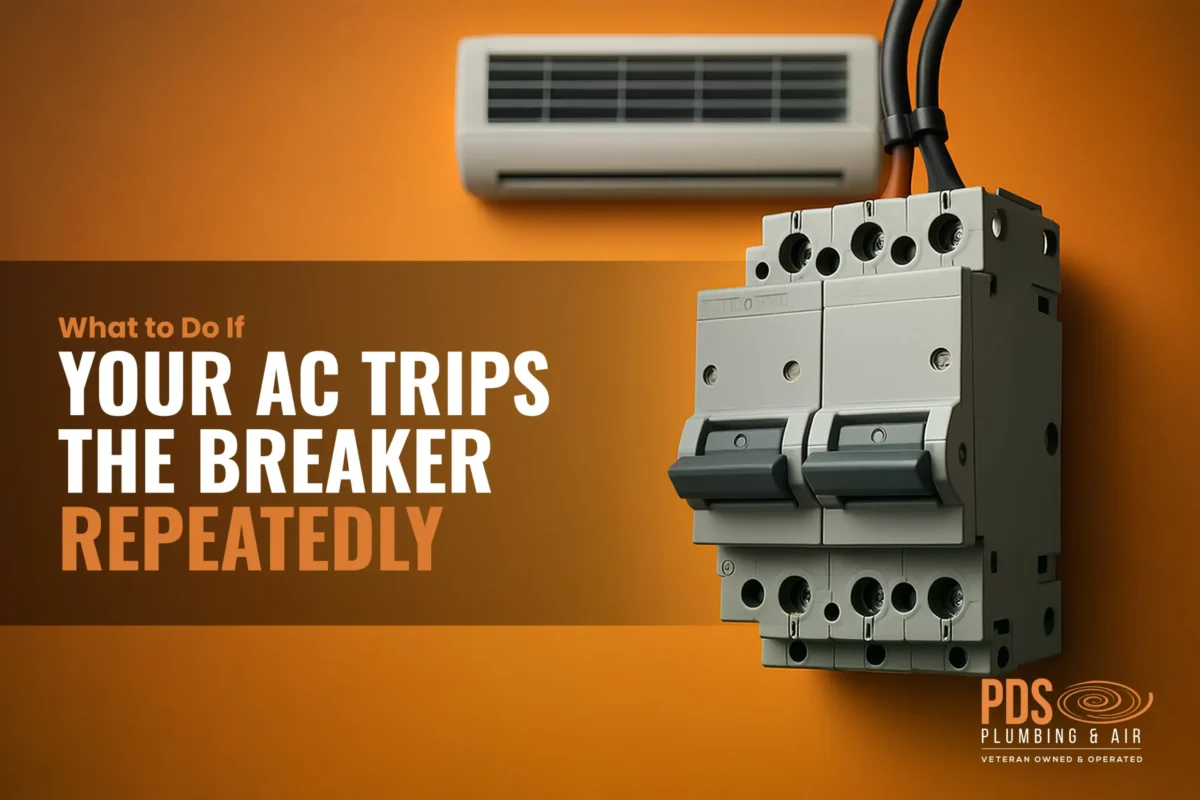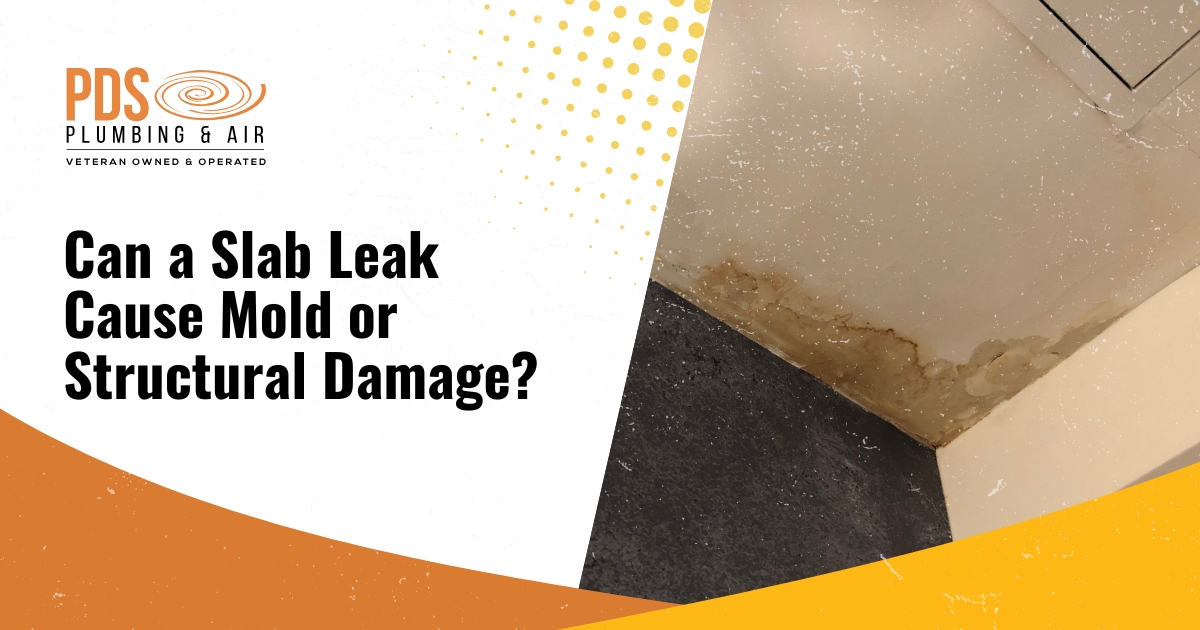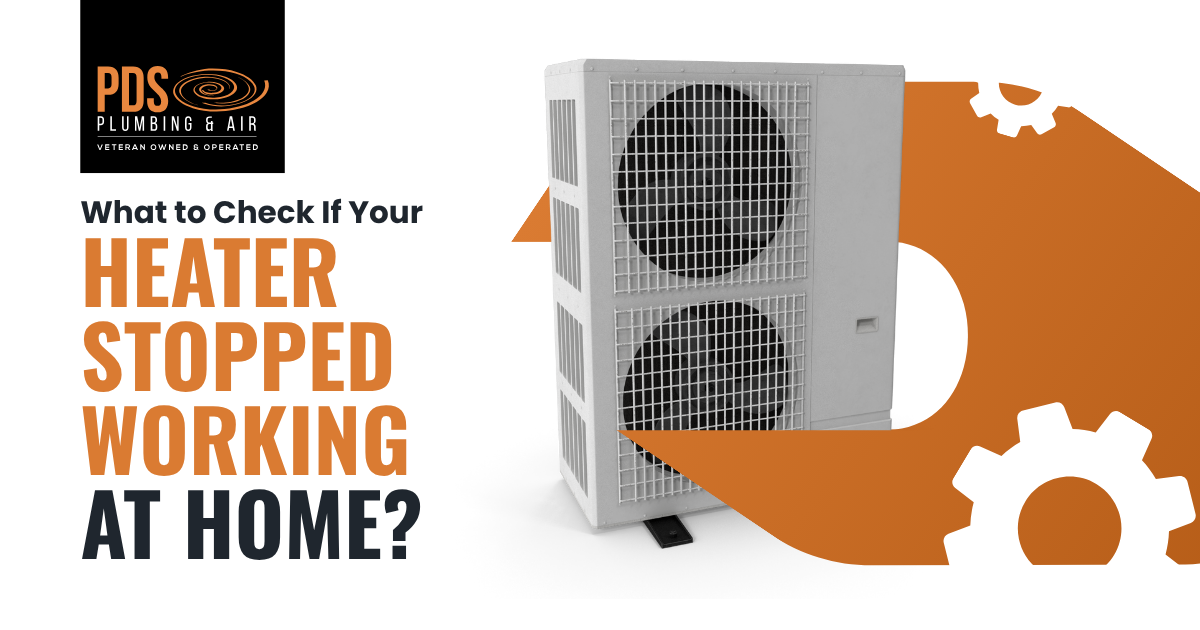
Although winter in California is generally short and mild, with average low temperatures and limited winter precipitation, it’s still important to make sure that your heater is functioning properly. If you ever run into an issue where your heater stops working at home, what should you do? The experienced team at PDS Plumbing and Air has a helpful list of some things to check that could make troubleshooting, diagnosing, and repairing your home heating system easier.
Common Reasons Your Heat Isn’t Working
There could be one or more of several reasons that your heat is not working in the house. These reasons vary in terms of the underlying cause of the problem and the complexity. Some examples include issues with the thermostat, airflow, the electrical connections, or the gas line and/or gas components if you have a gas furnace. Here are seven things to check if your house heater is not working.
1. Check Your Thermostat Settings
One of the most common reasons why your HVAC is not heating is related to an issue with the thermostat, which can cause your heater to blow cold air. The unit may have dead batteries, an issue with the electrical connection, or it could be set incorrectly. Examine your thermostat and confirm that it’s set to “Heat” and that the temperature is set to at least five degrees or more above the current temperature in your home.
If checking and adjusting the thermostat settings doesn’t help, confirm that your thermostat has fresh batteries. Often, a dead battery can be the culprit. However, if your thermostat is hardwired, you may need assistance from a professional electrician to ensure that the wiring and connections are secure. When all else fails, contact the pros at PDS for diagnosis and repair.
2. Inspect the Furnace Switch and Circuit Breaker
If your furnace won’t turn on or if it’s not heating your home, it could be related to the furnace switch and/or the circuit breaker. To inspect this component, start by locating and resetting your furnace circuit breaker in the electrical panel. Turn the breaker off, then back on to see if the furnace starts.
You may also have an issue with the furnace’s main power switch, which is usually a small lever found near the unit. Check that the switch is in the “on” position, and if not, flip it to the “on” position and see if that helps. After checking and resetting the furnace switch and circuit breaker, if the furnace still won’t turn on, you may need to call PDS for a professional inspection and possible repair.
3. Look at the Air Filter
Airflow issues are another very common reason why your heater might stop working at home. Restricting airflow forces the heater to exert more effort in maintaining the indoor temperature, potentially leading to the entire unit shutting down. Locate your furnace or heater’s air filter and remove it from the unit to inspect it.
If the air filter is dirty or clogged, replace it with a new one. A new, high-quality air filter will improve system airflow and keep heated air flowing through your home more efficiently, making it an important part of routine maintenance. In most cases, you should replace the air filter every 30 to 90 days, per the manufacturer’s instructions. However, if you have pets or use your heater frequently, you might need to replace the filter more often.
4. Check Your Pilot Light or Ignition System
For gas furnaces, issues with the pilot light or the ignition system may be the underlying cause of your heater not working, which can cause your furnace to turn on and then off immediately. Inspect the pilot light and confirm that it is a steady blue flame. If the pilot light is flickering or if it’s orange or yellow, turn off your furnace and call PDS right away, as this could be a sign of a potentially dangerous gas leak.
Check the ignition switch of your gas furnace to make sure that it’s working properly. To start the furnace, turn up the thermostat and restart it. Inspect the igniter, which is found inside the furnace near the burners, and look for cracks, which are a sign that the component is faulty and needs to be replaced.
5. Listen for Strange Noises or Smells
Unusual noises or unpleasant odors are both signs that your heater needs attention. Listen carefully for strange popping, hissing, banging, or screeching sounds. If your heater is making any of these noises, schedule a professional repair as soon as possible to find and address the root cause.
The odor of rotten eggs is a common indicator of a major issue with your gas furnace. Musty odors are typically related to a leak or moisture in the ductwork or the system itself. If you smell a burning odor, it could be due to loose wiring or another problem with the electrical connection.
6. Inspect Air Vents and Ductwork
Your ductwork and air vents deliver heated air to each room in your home. If there’s an issue with these, it could cause your heater to stop working. Inspect all the air vents in your house and ensure they’re free of obstructions, such as area rugs or furniture, that prevent treated air from entering the room.
Clogged or dirty ductwork is another common problem with home heating. Schedule a professional ductwork inspection and cleaning to remove dust, debris, and other buildup. Not only will having clean, unobstructed air ducts improve the heating in your house, but it will also improve the indoor air quality.
7. Reset the Furnace or HVAC System
In some cases, you may simply need to reset your furnace or HVAC system to get things working again. Turn the power off to the unit at the thermostat and the circuit breaker. Once everything is off, wait a few minutes and turn the power back on. Set the thermostat to “Heat” and check to see if it starts producing heat.
Some systems may have a separate reset button located on the blower motor. Look for this button and press it after the power is turned off to see if this resets your system. If you have a gas furnace, you may also need to reset or reignite the pilot light.
When To Call an HVAC Professional
Here’s when you should contact an experienced HVAC technician to address your heater issues and options:
- If you experience issues with your gas supply line or suspect a gas leak, turn off your furnace and contact a professional immediately.
- Sparking or buzzing sounds, or exposed wires, are signs that you may have a potentially serious electrical issue.
- A sudden increase in your energy bill without a corresponding change in usage is a sign that you may need professional repairs.
- If your heater turns on but it’s not producing heat, or if there are lukewarm areas in your home, you should call an HVAC professional.
How To Prevent Future Heating Problems
The best way to prevent future heating problems is to schedule routine maintenance, including an annual inspection, cleaning, and tune-up. It’s also essential to ensure your furnace or HVAC system is correctly sized for your home. Replace your air filter as recommended by the manufacturer, and have your ductwork inspected and cleaned every two to five years, depending on the frequency of your heating use.
Contact PDS Plumbing and Air Today!
If you’re having heater issues, the experts at PDS Plumbing and Air are available to help customers throughout Clovis, Murrieta, Bellflower, and surrounding neighborhoods. If you’re facing a heating emergency, we also offer 24/7 emergency repairs. To schedule service with our company, contact us today!

